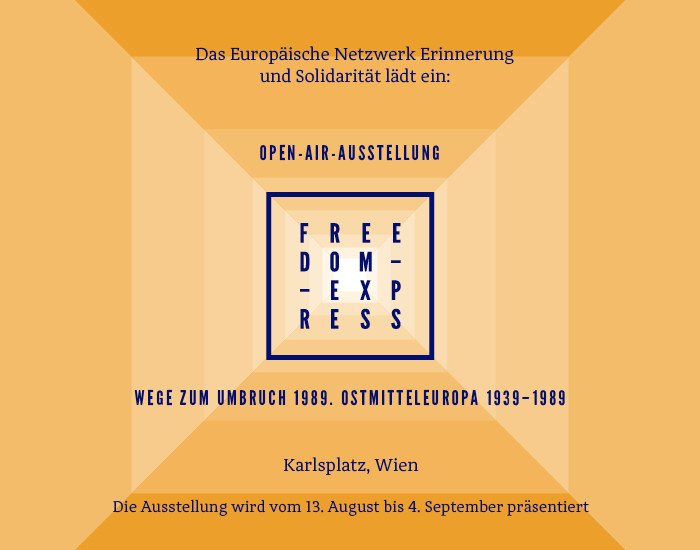The exhibition was presented on the Karlsplatz in Vienna from 13 August to 4 September. In the heart of Austrian capital, a place with complex history in the 20th century, visitors got a chance to learn about the complicated process through which Central and Eastern Europe had regained its freedom from communist dictatorship.
The exhibition is part of ‘Freedom Express’, a social and educational campaign organised by ENRS together with the ministries responsible for culture in Poland, Germany, Hungary, Slovakia and Romania. The exhibition presented already in Berlin, Brussels, Warsaw and Budapest concentrates on the various ways in which civil liberties were limited in the former communist bloc and on attempts made to regain them. It focuses especially on the question of what connects and divides remembrance of the events that preceded the fall of communism in Central and Eastern Europe.
Prof. Jan Rydel, chairman of the ENRS Steering Committee, explains: ‘The idea for this exhibition stems from the conviction that reflection on the 1989 transition in individual states becomes fuller and deeper when viewed in the pan-European context. Our aim is first and foremost to remind everyone of the processes that eventually led to the fall of communism in this part of Europe.’
The presentation in Vienna was possible thanks to the cooperation with the Embassy of the Republic of Poland in Vienna, with the help from the Embassy of Slovakia, the Embassy of Hungary and the Embassy of Romania.
After the presentation in Vienna (13 August – 4 September) the exhibition ‘Roads to 1989. East-Central Europe 1939-1989’ will go this year to Bucharest.
